US “Bunker Buster” attacked Iran’s 3 nuclear sites during Iran-Israel conflict
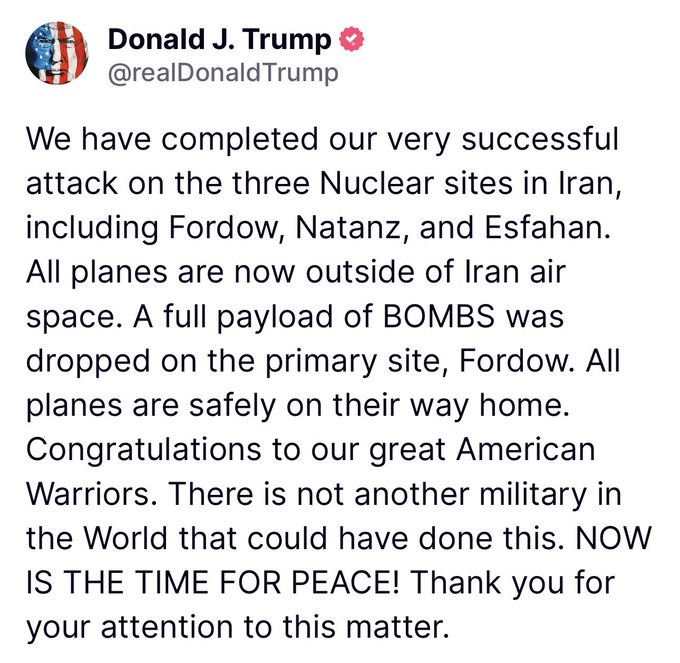
U.S. President Donald Trump announced that the American military carried out airstrikes on three locations in Iran, representing a major intensification in the current conflict involving Israel. Among the targeted sites was Fordo, a vital uranium enrichment facility previously untouched by Israeli strikes and considered crucial to Iran’s nuclear ambitions.
The United States has officially entered the conflict between Israel and Iran by launching airstrikes on three nuclear facilities in Tehran. On Sunday, President Donald Trump declared that the attacks had “completely destroyed” Iran’s primary nuclear sites, warning that the U.S. would pursue additional targets unless Iran swiftly agreed to peace.
“I can report to the world tonight that the strikes were an extraordinary military triumph,” Trump stated, noting that they specifically targeted the key underground enrichment site at Fordow, along with nuclear facilities in Natanz and Isfahan.
GBU-57 “Bunker Buster”
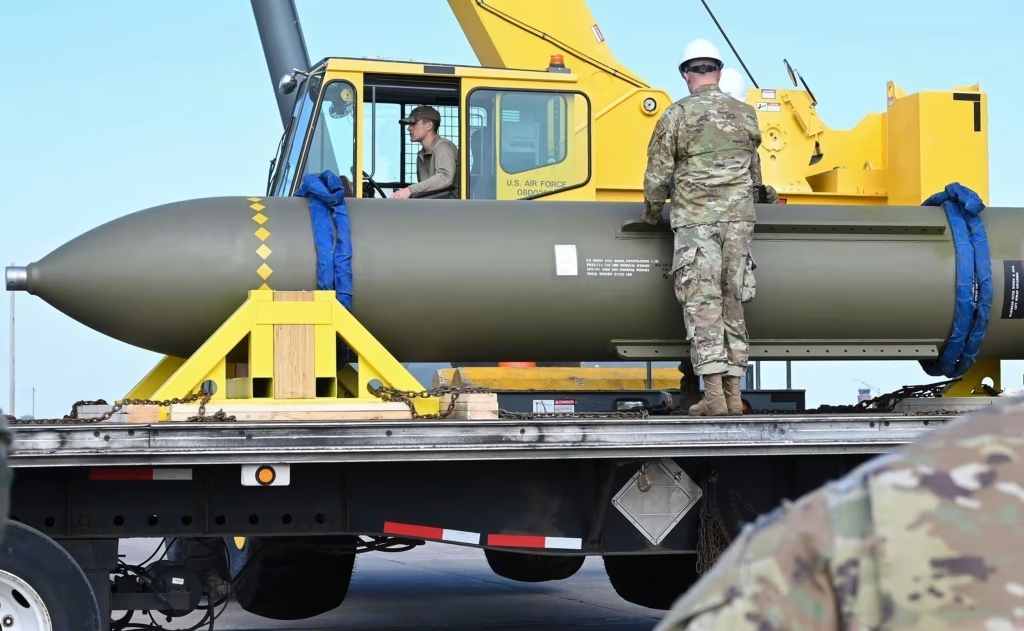
The GBU-57 Massive Ordnance Penetrator (MOP) is a precision-guided bomb weighing around 30,000 pounds (13,600 kg), developed for the U.S. Air Force to penetrate fortified underground bunkers. By November 2015, at least 20 units had been produced. Built with a BLU-127 bomb body and a guidance system, the GBU-57 is available in multiple variants with differing weights. It significantly outweighs earlier bunker-busting bombs like the 5,000-pound (2,300 kg) GBU-28 and GBU-37. Due to its considerable size—20.5 feet (6.2 meters) in length—the only operational U.S. aircraft capable of deploying it is the B-2 Spirit strategic bomber.
There is uncertainty over whether the GBU-57 Massive Ordnance Penetrator (MOP) can effectively destroy Iran’s nuclear facilities at Fordow and the newer underground chambers at Natanz, which are believed to be buried over 80 meters (260 feet) deep. In contrast, the original Natanz facility lies approximately 20 meters (66 feet) below ground.
The MOP is reportedly capable of penetrating around 60 meters (200 feet) of soil or 18 meters (59 feet) of reinforced concrete with a compressive strength of 5,000 psi (34 MPa). However, Iranian research has produced concrete with strengths surpassing 30,000 psi (210 MPa), potentially limiting the bomb’s impact. Additional complications include the weapon’s accuracy under GPS-jamming conditions and the risk of deflection due to sophisticated bunker design techniques.
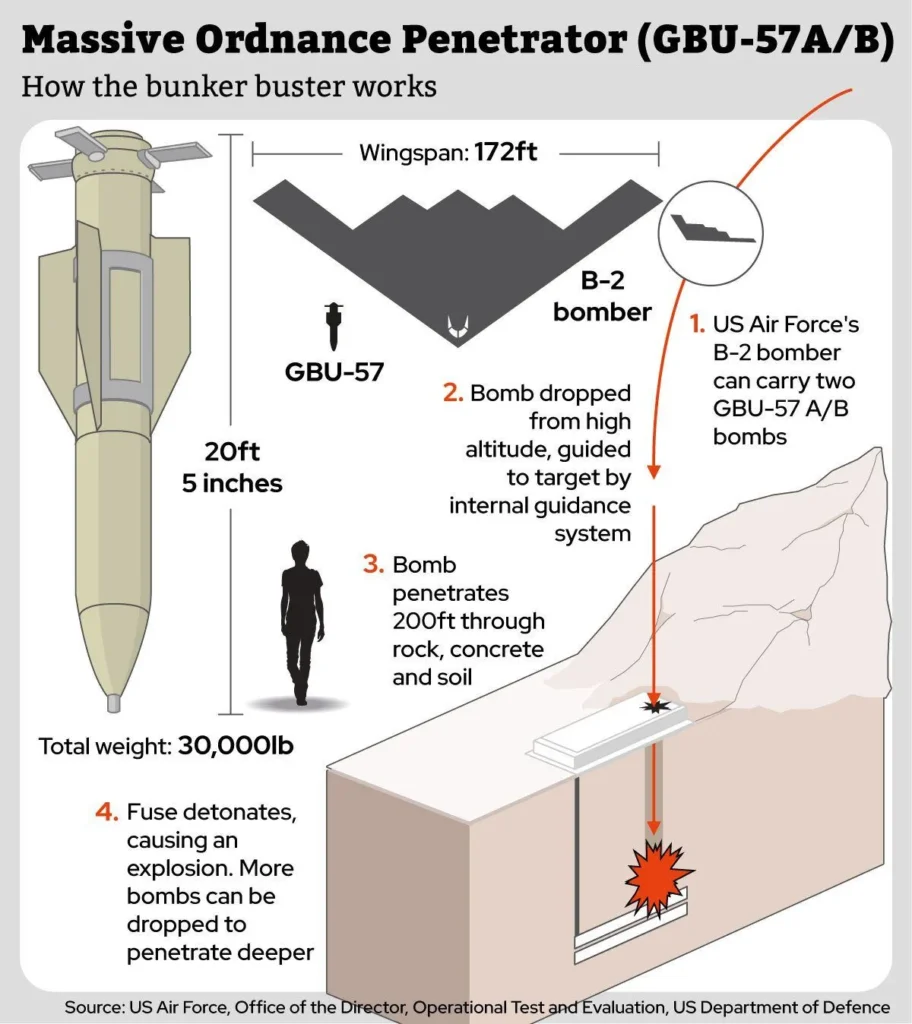
B-2 Spirit “Bunker Buster”
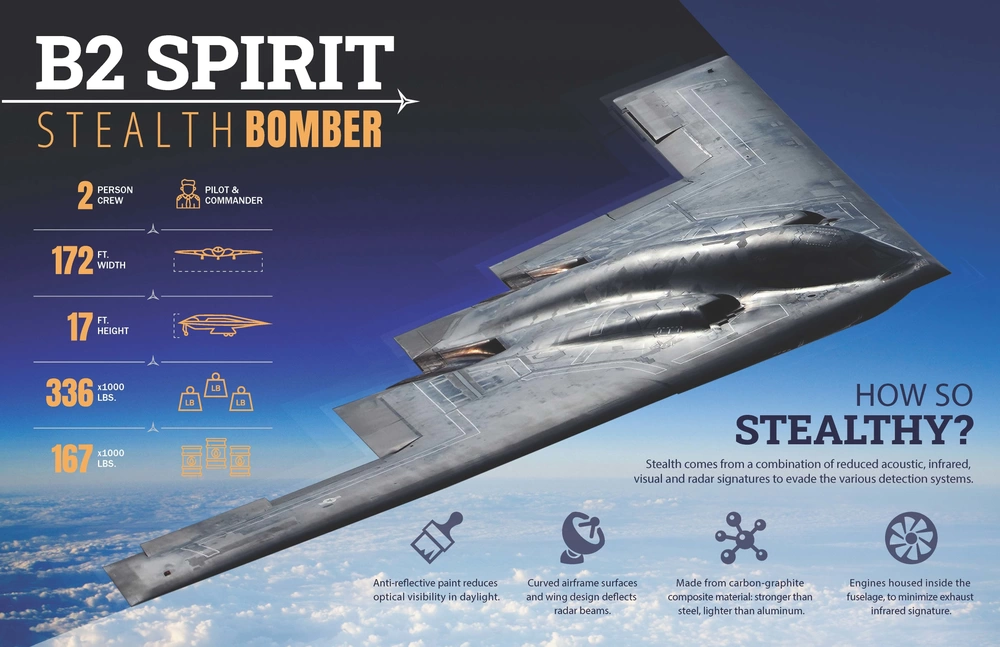
The Northrop B-2 Spirit, commonly referred to as the Stealth Bomber, is a U.S. heavy strategic aircraft designed with advanced stealth capabilities to evade sophisticated air defense systems. Featuring a subsonic flying wing design and operated by a two-person crew, it was developed primarily by Northrop (now Northrop Grumman) with key contributions from Boeing, Hughes, and Vought, and was manufactured between 1988 and 2000. The B-2 is capable of deploying both conventional and nuclear armaments, including up to eighty 500-pound (230 kg) Mk 82 JDAM GPS-guided bombs or sixteen 2,400-pound (1,100 kg) B83 nuclear bombs. Notably, it remains the only known active aircraft able to deliver large air-to-surface standoff weapons while maintaining a stealth profile.
The B-2 can perform attack missions at altitudes of up to 50,000 feet (15,000 m); it has an unrefueled range of more than 6,000 nautical miles (11,000 km; 6,900 mi) and can fly more than 10,000 nautical miles (19,000 km; 12,000 mi) with one midair refueling.
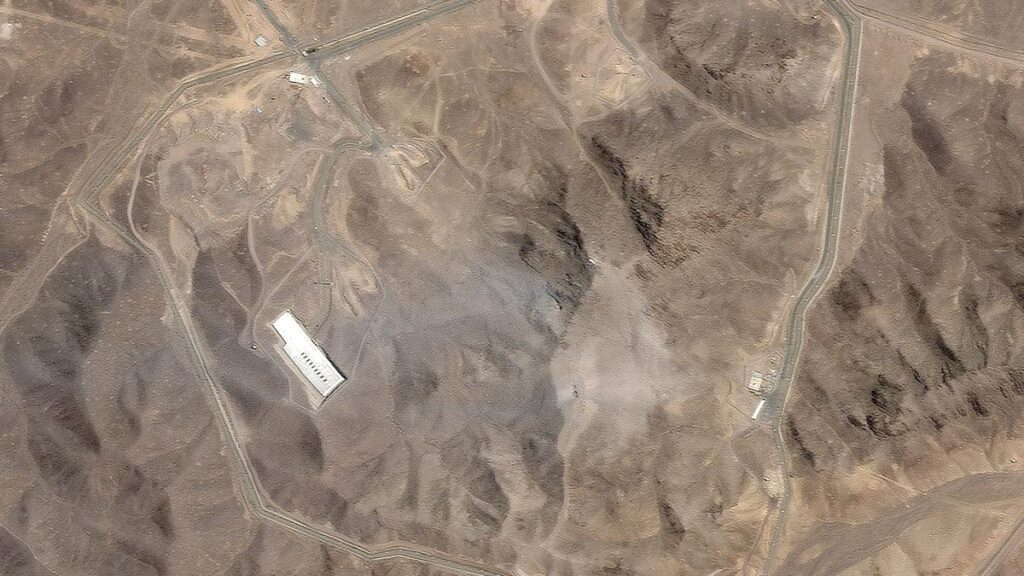
Iran’s take on this attack
Iran’s Foreign Minister Abbas Araghchi condemned the attacks. “The United States, a permanent member of the United Nations Security Council, has committed a grave violation of the UN Charter, international law and the NPT by attacking Iran’s peaceful nuclear installations. The events this morning are outrageous and will have everlasting consequences. Each and every member of the UN must be alarmed over this extremely dangerous, lawless and criminal behavior. In accordance with the UN Charter and its provisions allowing a legitimate response in self-defense, Iran reserves all options to defend its sovereignty, interest, and people,” he said in a post on X.
What could be the outcome
How might Iran retaliate?
- Do nothing. This could spare it from further US attacks. It could even choose the diplomatic route and re-join negotiations with the US. But doing nothing makes the Iranian regime look weak, especially after all its warnings of dire repercussions if the US did attack. It may decide the risk of weakening its grip on its population outweighs the cost of further US attacks
- Retaliate hard and fast. Iran still has a substantial arsenal of ballistic missiles after manufacturing and hiding these away for years. It has a target list of around 20 US bases to choose from in the broader Middle East. It could also launch “swarm attacks” on US Navy warships using drones and fast torpedo boats
- Retaliate later at a time of its own choosing. This would mean waiting until the current tension has subsided and launching a surprise attack when US bases were no longer on maximum alert


